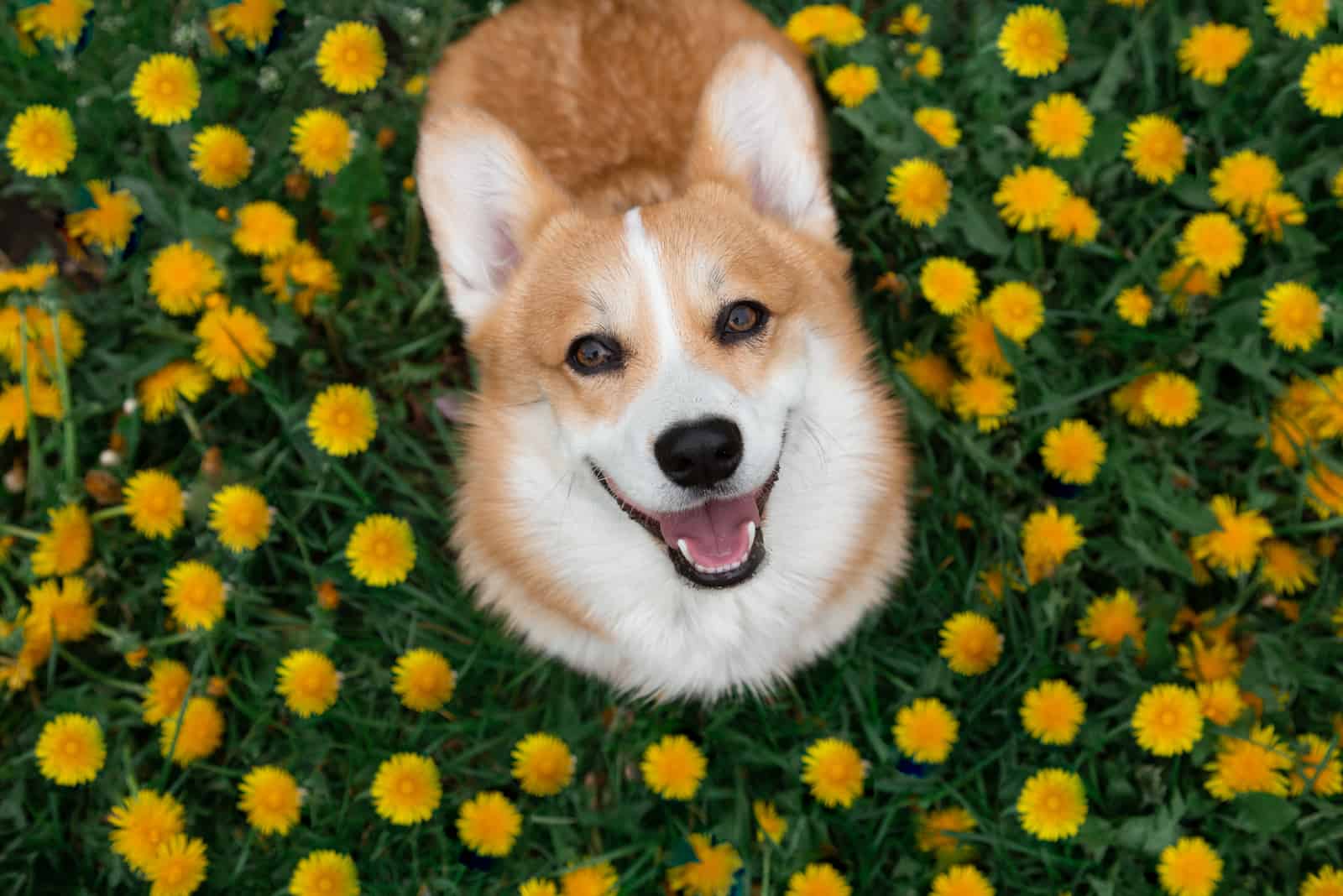What is it about the Corgi that makes them so endearing to thousands of dog lovers worldwide? Could it be their affectionate, playful nature? Or, perhaps because they are so smart and alert?
Maybe, it’s that big dog / little dog look as they have the head and body of a much larger dog, but with very short legs, giving them a slightly comical appearance that warms the heart.
It’s probably all of these reasons and more! But, whatever it is, the Corgi has truly captured our hearts as its popularity only grows with each passing year.
It has to be said that Queen Elizabeth II has had a part to play in boosting their popularity as Corgis have been a royal favorite since 1933 when King George VI brought one home. Then, in 1944, Princess Elizabeth received a Corgi named Susan as a gift from her father for her 18th birthday. Since that time, she has owned around 30, all descended from Susan. Most are purebred Corgis, but some are crossed with the Dachshund to create Dorgis!
We often refer to these noble dogs as the Corgi, but some people don’t realize that there are two separate Corgi breeds; the Pembroke Welsh Corgi, and the Cardigan Welsh Corgi. The Queen has always favored the former of these two, which may account for them being higher on the American Kennel Club’s list of most popular dogs. Pembroke Welsh Corgis are placed at 13th out of two hundred, while Cardigans are at 68th.
In this article, we are going to focus on the different coat colors of these two breeds. As we dive into the world of dog colors and genetics, we’ll come across some terms you may not be familiar with, so we’ll do our best to keep it simple and explain things as we go along.
How Many Colors Do Corgis Come In?
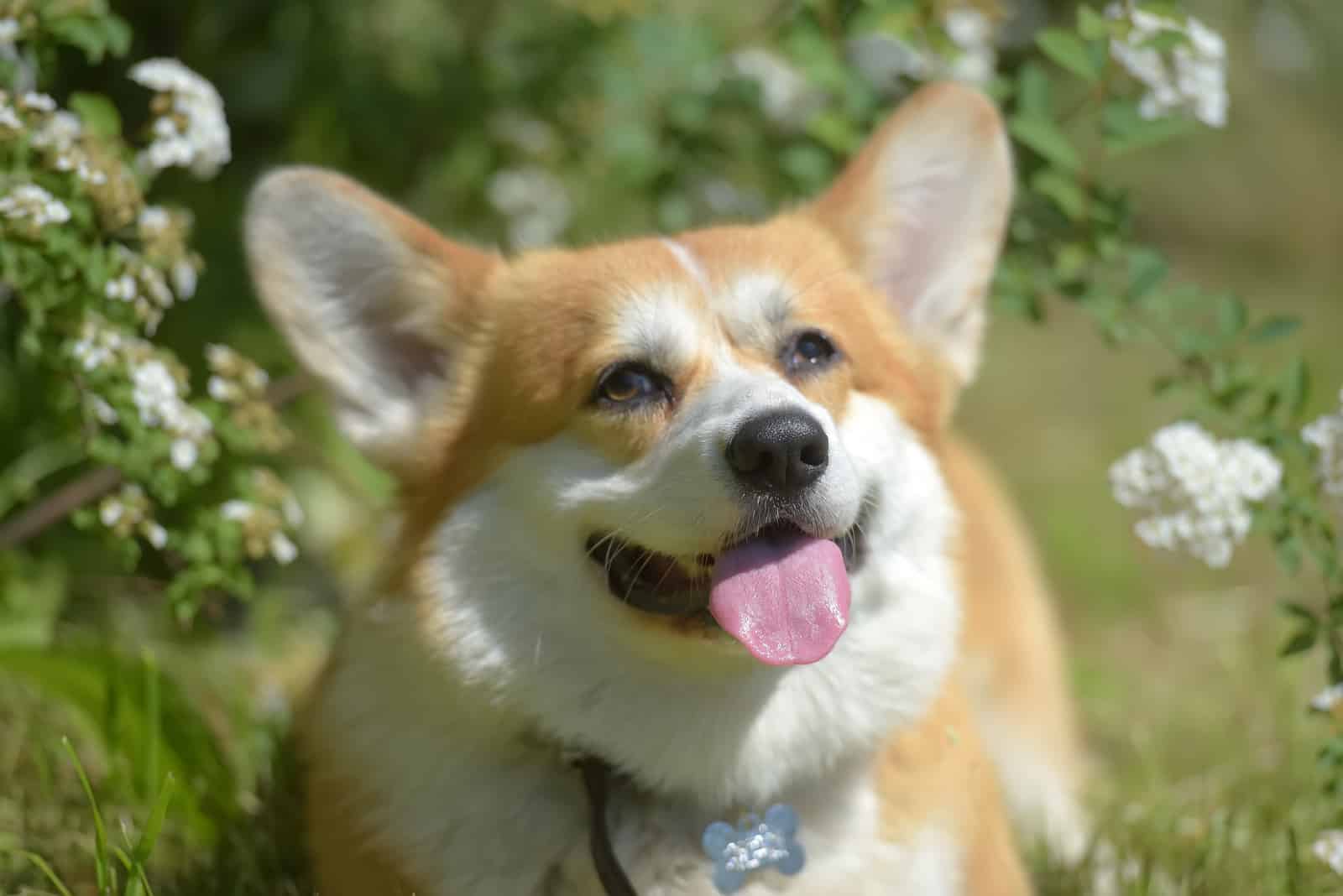
Now, this seems like a straightforward question, but we have to point out that there are standard colors and non-standard Corgi colors.
Why is this? Well, it all comes down to conformation.
All purebred dogs are regulated by kennel clubs or societies established specifically to oversee a particular breed. These groups publish a set of breed standards that lay down rules as to how the dog should appear. This includes coat colors, eye color, average weight and height, and so on.
The trouble is, different groups often set different breed standards, so it depends on who you go to for your information.
The good news is if you don’t enter your dog into shows, it really doesn’t matter! Your dog could be any color you wish. All that matters is that it’s healthy.
So, you might ask, why do they restrict certain colors? Mostly, it’s to do with keeping the traditional form… to stop the breed from extinction. However, certain colors are discouraged because the genes that create them are thought to cause health defects. We’ll cover this in more detail later, but first, we’ll try to answer the question.
AKC Corgi Colors
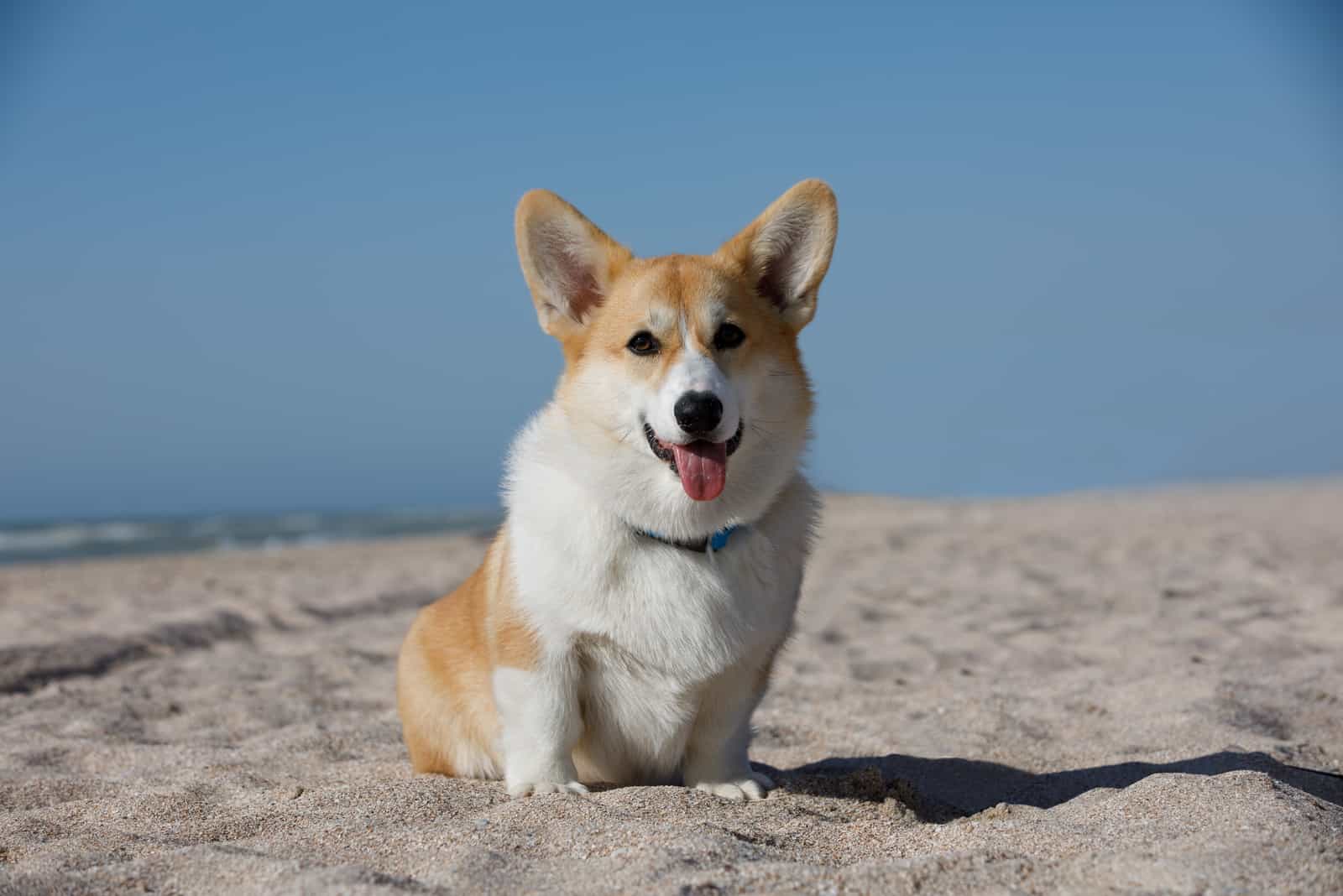
According to the American Kennel Club (AKC), there are nine official ‘standard’ colors and six further ‘non-standard’ colors. Those in the latter group are tolerated, but would probably be grounds for disqualification in the show ring. These standards are backed and enforced by groups such as the Pembroke Welsh Corgi Club of America.
Oddly enough, all of the non-standard colors are found in the Cardigan Welsh Corgi, while the Pembroke has none listed.
When it comes to markings (patches, specks, or ticks of color on the dog’s coat that are different from the base color), the AKC allows the Pembroke to only have white and nothing else. However, the Cardigan Corgi is allowed to have seven. There are no allowances for any markings outside of these for either breed.
The AKC and other organizations don’t only regulate the colors, but they also stipulate the extent and position of any color or marking. For example, if a dog has too much white or ticks and flecks in ‘the wrong place’, then they will be denied a ribbon at the show!
So, how many Corgi colors are there? According to the AKC, there are fifteen.
We’ll explore these in more detail, and answer some of your questions along the way.
So, what are these ‘official’ Corgi colors? We’ve split them by each breed to make it clearer…
Pembroke Welsh Corgi Colors
Standard Colors
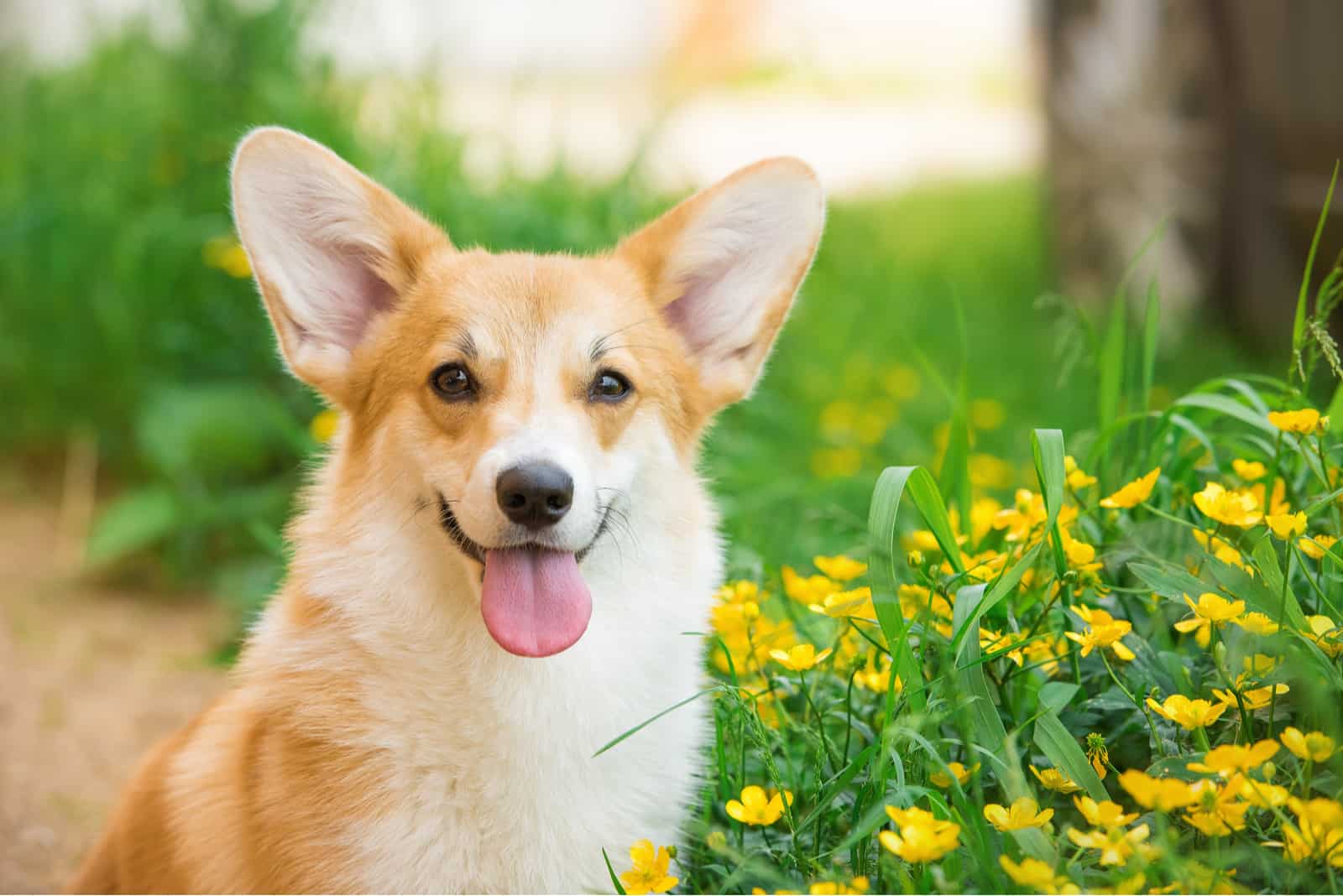
• Fawn
• Sable
• Black and tan
• Red
Markings
• White markings
Although the above colors are given as one word, suggesting that the dog’s coat is a single, solid color, there is no such thing as a solid colored Corgi! At least, that is, none that is recorded. These were once fairly common in the past, but they have been phased out through selective breeding over many generations.
The colors listed above all have white markings.
Cardigan Welsh Corgi Colors
Standard Colors
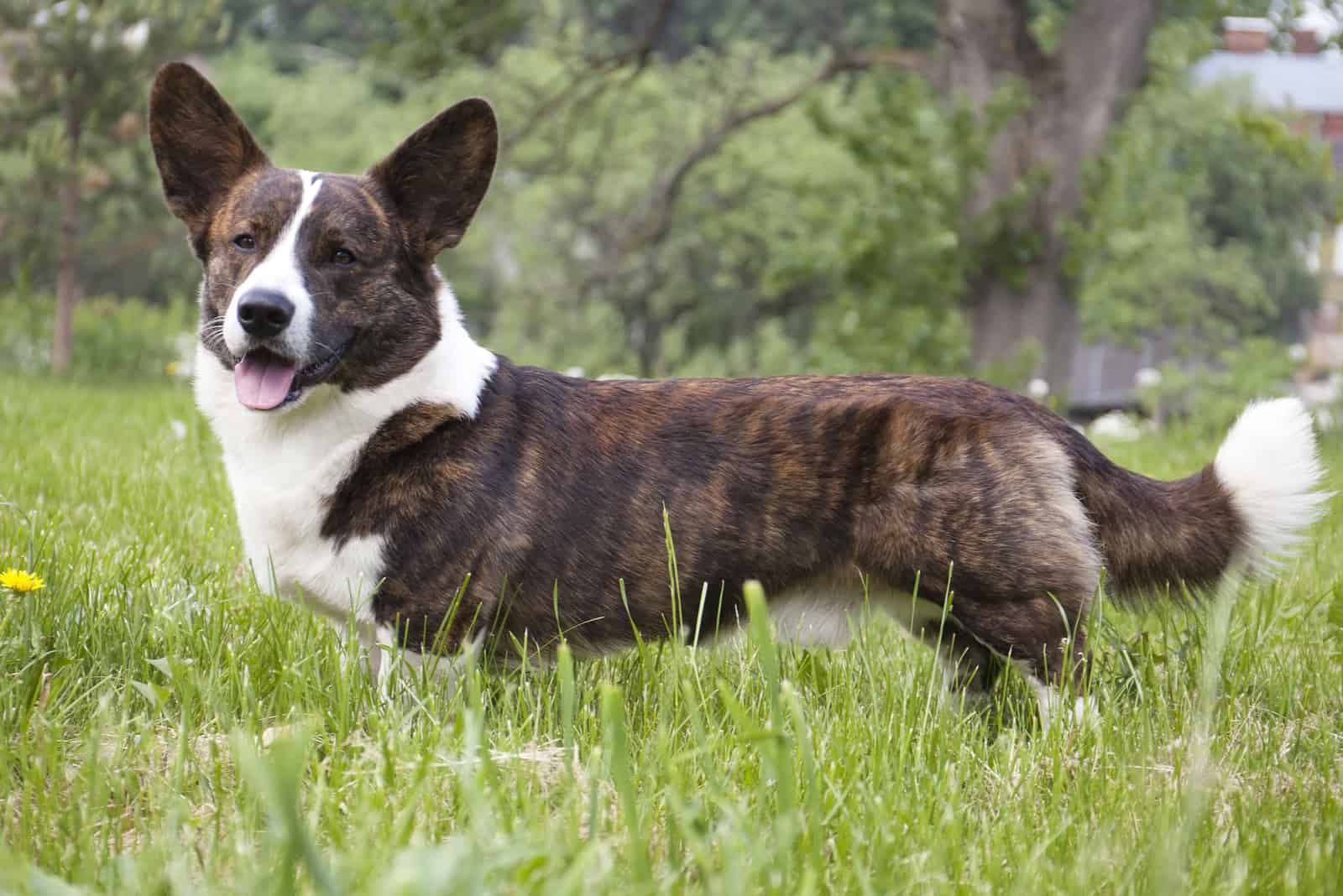
• Red and white
• Brindle and white
• Black and white
• Sable and white
• Blue merle and white
Non-standard colors
• White merle
• Gray and white
• Sable merle and white
• Red merle and white
• Liver and white
• Brindle merle and white
Markings
• Ticked
• Brindle points
• Brindle points and ticked
• Black mask
• Tan points
• Tan points and ticked
• Black mask and ticked
Among these different colors, you might see some unfamiliar words, so let’s just take a moment to explain them.
A Sable Corgi has hair that is lighter at the base and darker at the tip. Think of the German Shepherd coat and you’ll have an idea of what it looks like. Sable is more of a pattern than an actual color.
Brindle is another pattern, sometimes called tiger striping, because of the tight bands of darker and lighter colors in the coat. It’s more subtle than tiger stripes as the colors are blended. It is often found as darker banding over a red coat, although shades vary widely.
Merle Corgis can be blue, red, or chocolate. Again, it’s a pattern rather than a true color, resulting in a mottled effect on the coat. The gene that creates this pattern is also responsible for skin and eye pigmentation, so merle dogs can have different colored skin and blue eyes, or even one blue and one brown eye!
The merle gene has been linked to certain health conditions, such as deafness and eye problems, which is why some breeders and kennel clubs warn against buying them.
A coat that is ticked has small patterns of spots or flecks on a white background. This usually denotes the color they would have been if there was no white present.
When referring to color, the Points are simply parts of the dog’s body, such as the hips, muzzle, withers, shoulder, etc. We need to be careful here because skin points are different, referring to the paw pads, eyelids, lips, and nose.
Finally, the mask is just what you might think: it’s the coloring around the dog’s eyes and muzzle that makes it look as if it was wearing a mask, or sometimes, like a raccoon!
Before we venture further with Corgi colors, we’ll pause to examine the two breeds in order to help us get to know them better.
Pembroke Vs. Cardigan
It’s a good idea to begin with a quick comparison between the two breeds just to give us a clear picture of the differences and similarities.
We’ll start with their name, Corgi, which is said to be taken from the Celtic meaning, dwarf-dog. The other names, Pembroke and Cardigan, refer to the regions of Wales where the breeds originated. Both are hardy breeds, developed as herding dogs in the rugged Welsh hills. They were deliberately bred to be low to the ground, with the ability to dart in among cattle and nip at the heels of any that lagged behind or strayed from the path.
Despite the similarities and close proximity of the regions, they are not believed to be related, although it’s known that people did crossbreed them at various times. Because of this, the two were considered a single breed until 1934.
The Cardigan Welsh Corgi is the older of the two, and has been around for at least a thousand years, but their ancestors were possibly brought to the UK as far back as 1200 BC.
The Pembroke Welsh Corgi was thought to have been brought to England by Flemish weavers in the early 1100s.
But, what’s the difference between them?
Let’s take a look!
[table id=171 /]
[table id=172 /]
In truth, there’s not a great deal of difference in their size, although Cardigans are usually slightly bigger. This is because they have a thicker, denser bone structure, with an exaggerated bend in the front legs. They also have rounded ears, while the Pembroke has pointed ears.
In terms of their temperament, both breeds are extremely affectionate, and they will be ready to cuddle – although each individual dog is different! The Pembroke is more likely to dive right into a situation as they are more outgoing. The Cardigan is more laid-back and will assess things before they go ahead.
Cardigans are not as energetic as the Pembroke either, but they won’t say no to a long walk when the opportunity arises.
Both are happy dogs, with a good sense of humor and, at times, mischief. Overall, the Cardigan Welsh Corgi is more adaptable and independent whereas the Pembroke will relish every second it spends with you – it just wants to be by your side all the time!
Now that we’ve covered this, let’s talk more about Corgi colors.
Corgi Color Genetics
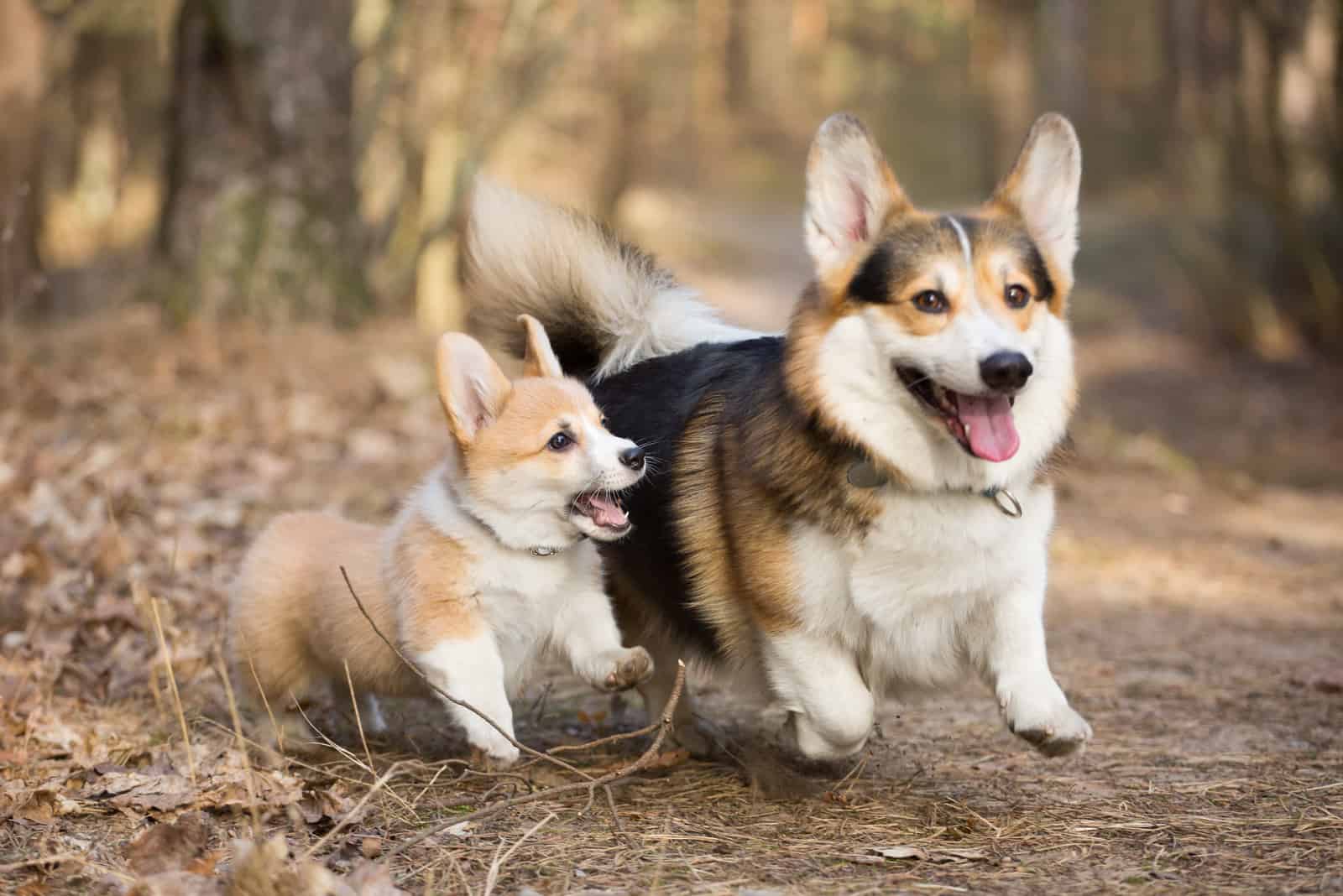
Don’t worry – we’re not going to get too technical!
Just like any other dog breed, Corgi colors are created by two pigments: eumelanin and pheomelanin. The first one, eumelanin, is responsible for any black in the coat as well as color in the eyes and nose.
Pheomelanin creates red shades, but only in the coat.
So, how do we get such a variety of colors? This is all because of the genes that each pup inherits from its parents. Some genes are dominant while others are recessive, which means that certain genes will override others.
There are only eight genes that affect the coat color, and they tell the cells to produce eumelanin, pheomelanin, or no pigment at all (which is why dogs have white coats or blue eyes!). These genes also affect the amount of pigment produced, which either makes the shade darker or lighter.
Obviously, the subject of genetics is much more complex than this, but we don’t need to get bogged down in all that! What we’ve learned here is more than enough to help us understand the subject for now.
What Is The Most Common Corgi Color?
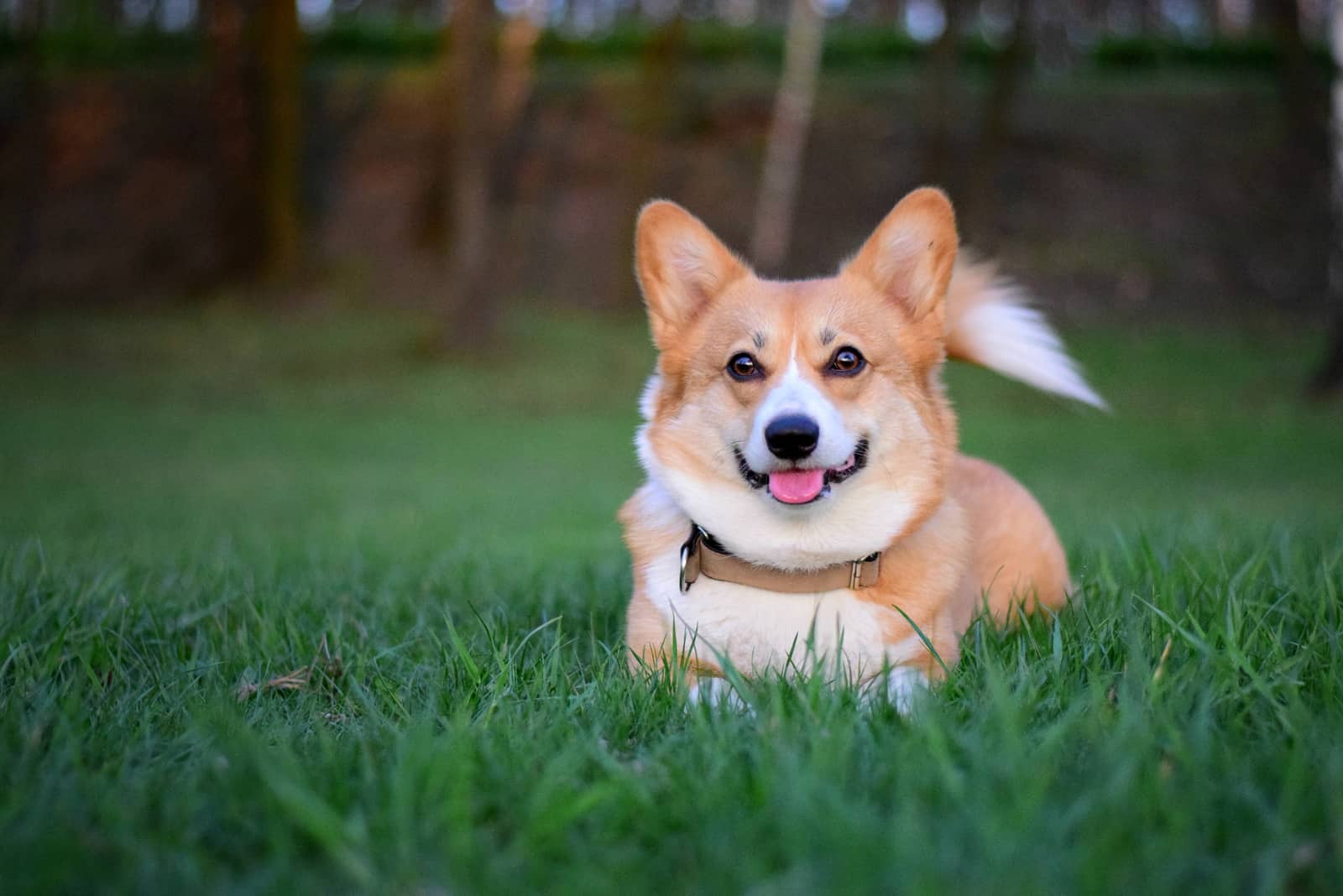
The red and white Pembroke Welsh Corgi is the most common by a long way, possibly because of Queen Elizabeth’s influence as these are her favorites.
However, the shades of red can vary quite a lot, with some darker and some much lighter… so light that it is called fawn.
Is There A Black And White Corgi?
Yes! Only in the Cardigan Welsh Corgi, though, as the black and white color is not seen in the Pembroke. However, look carefully and you’ll see tiny markings of other colors – it’s almost impossible to find a completely black and white Corgi.
Many people think these dogs look like a Border Collie with short legs!
Tri-Colored Corgi
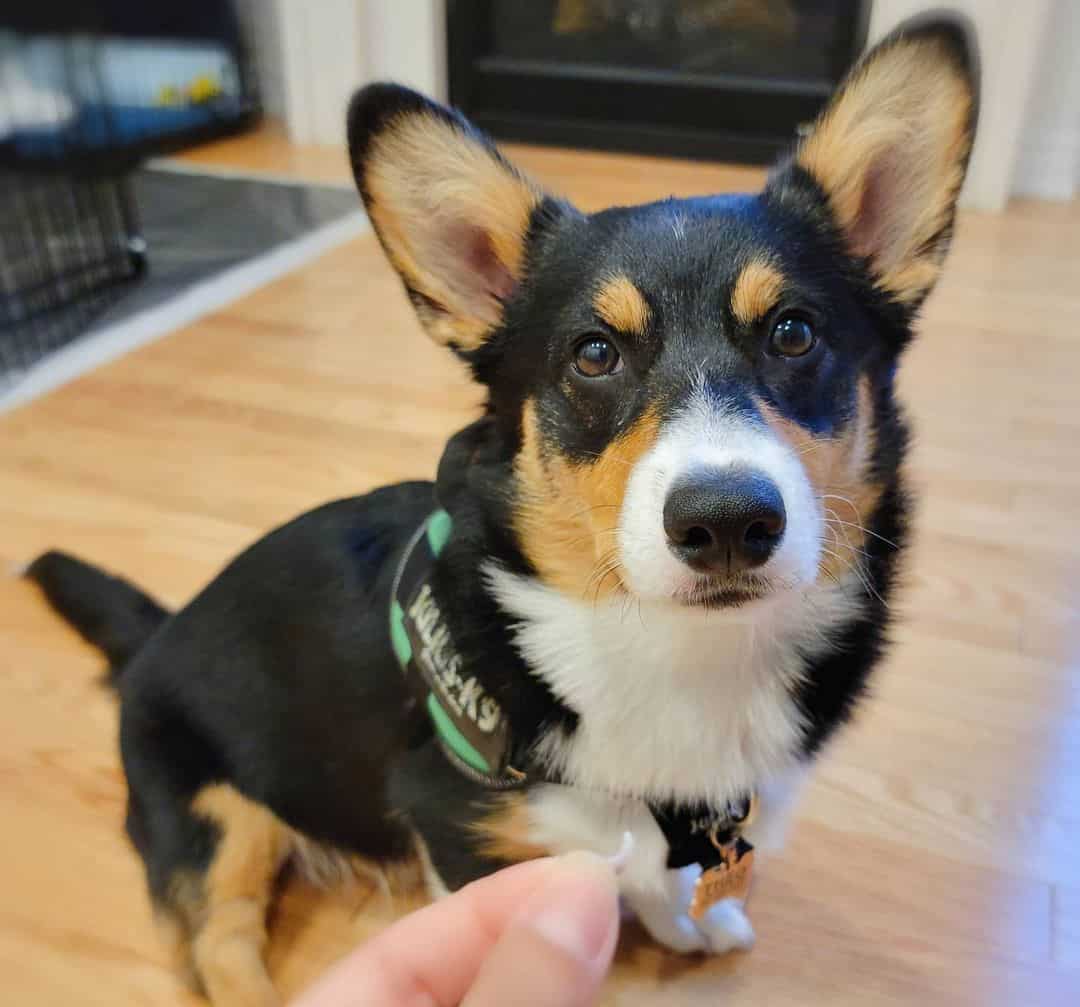
Photo from: @theo__the__corgi
People often ask if the tri-color Corgi is rare, and while it’s true that you don’t see as many around as you do of the red and white version, there are still plenty of them out there. Just head to a Corgi show and you’ll see them lined up proudly, waiting for their ribbons!
As you’ve guessed, tri-color means three-color, referring to the black and white coat, with the addition of tan around the mask, legs, and ears. It’s a beautiful look, and you can get black-headed tri-color or red-headed tri-color Corgis.
These are identified by the color of the fur inside the ears rather than the color of their head. A red-headed tri could have mostly black fur on its head!
Corgi Color Progression
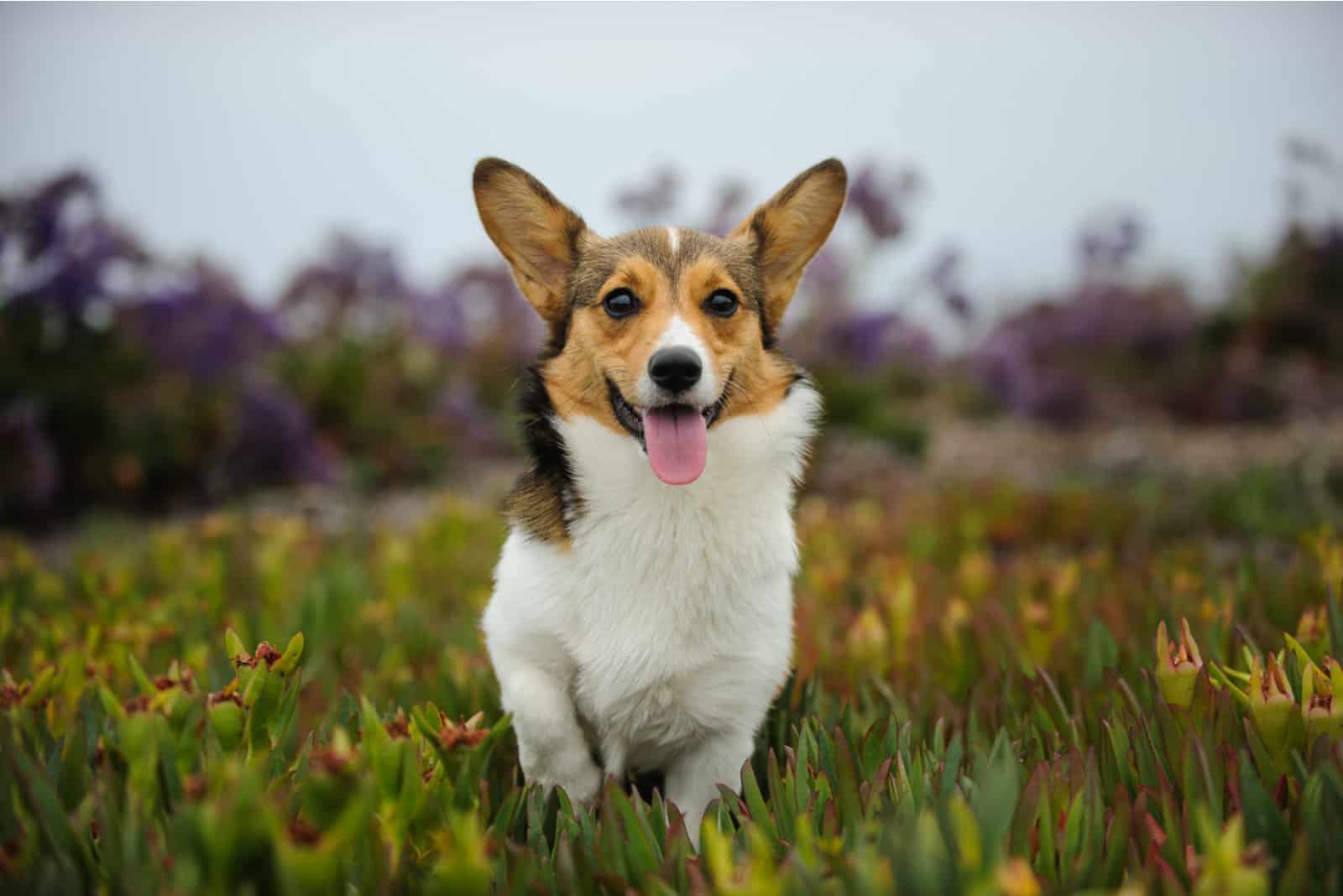
As with many other dog breeds, a Welsh Corgi puppy will change color as it matures. This is known as color progression, and it can be quite a dramatic change.
Corgi puppies will typically have darker coats that become lighter as they develop, and the colors will begin to blend together. Sable puppies will often fade to red and white, and markings can change significantly.
Corgi colors can be difficult to predict simply by looking at the pup, but experienced breeders are usually able to give an idea of how they might look when they are fully grown.
Rare Corgi Colors
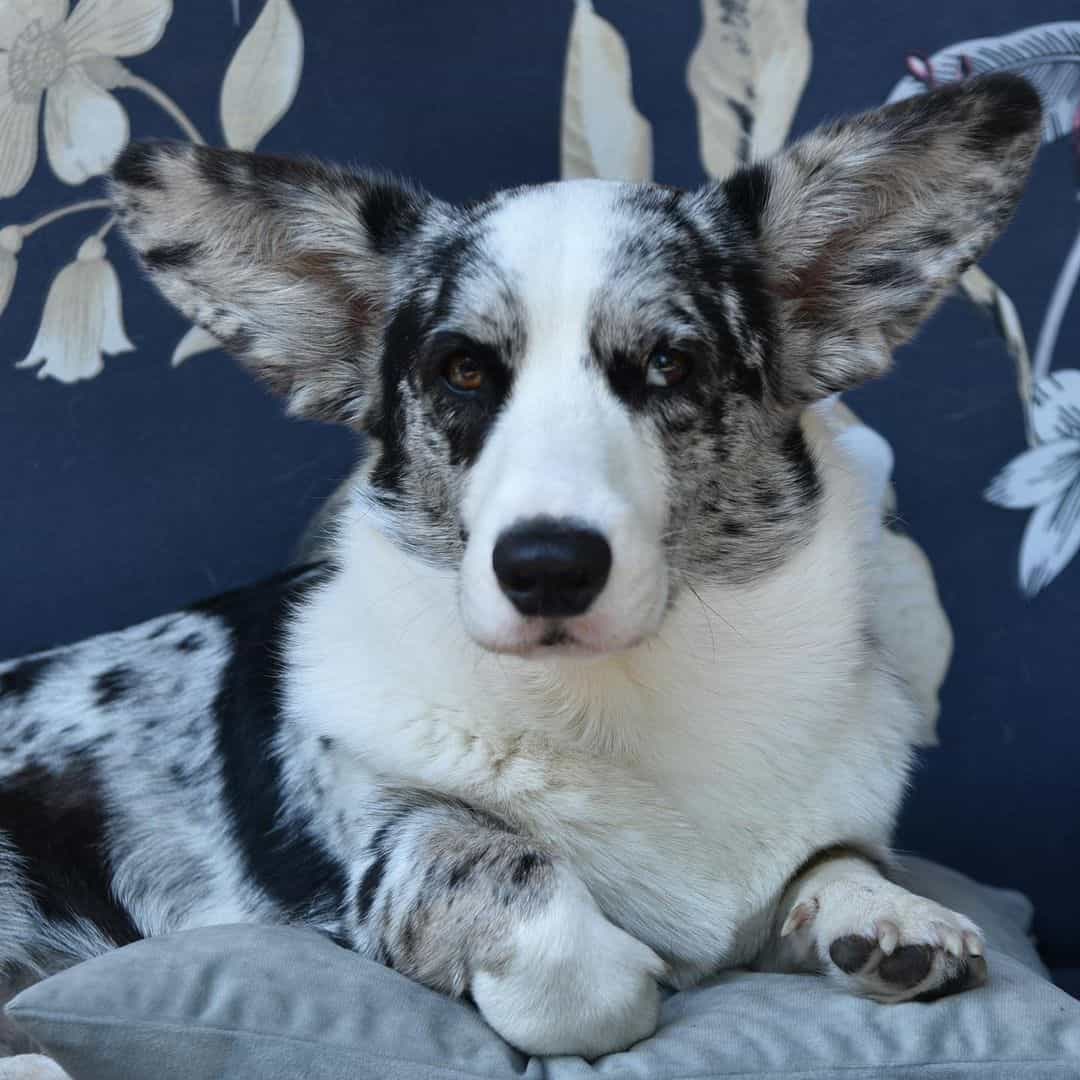
Photo from: @pchelkacorgi
Sable is the rarest of all Corgi colors, and it is sometimes difficult to identify – many sable Corgis are misidentified as red Corgis. As we explained earlier, sable is a pattern rather than a color. This can give the dog a black cast to the fur on its back and head, sometimes forming what’s known as a widow’s peak, which is a V-shaped line on the top of the head that dips down slightly between the eyes.
All merle Corgis are pretty rare, especially red merles. Due to the fascinating way that genes affect a dog’s coat colors, a red merle Corgi is actually a liver-colored dog with the merle gene. Liver is a diluted form of black.
White merle Corgis are stunning, with a white base coat, a gray marble pattern, black markings, and captivating blue eyes.
Blue merle Corgis are rare as well as beautiful. They can have a gray marbled or piebald pattern with darker patches. Blue merle Corgis often have blue eyes, or even just one blue and one brown eye. They also sometimes have pink patches on their nose, known as a butterfly pattern.
Note that the merle gene is never found in the Pembroke Welsh Corgi. A breeder selling merle Pems has definitely produced a mixed breed, probably by using the Cardigan Welsh Corgi. These will not be purebred Pembrokes, and it would be best to avoid any breeder who is not upfront about this fact.
Do Corgis Have Blue Eyes?
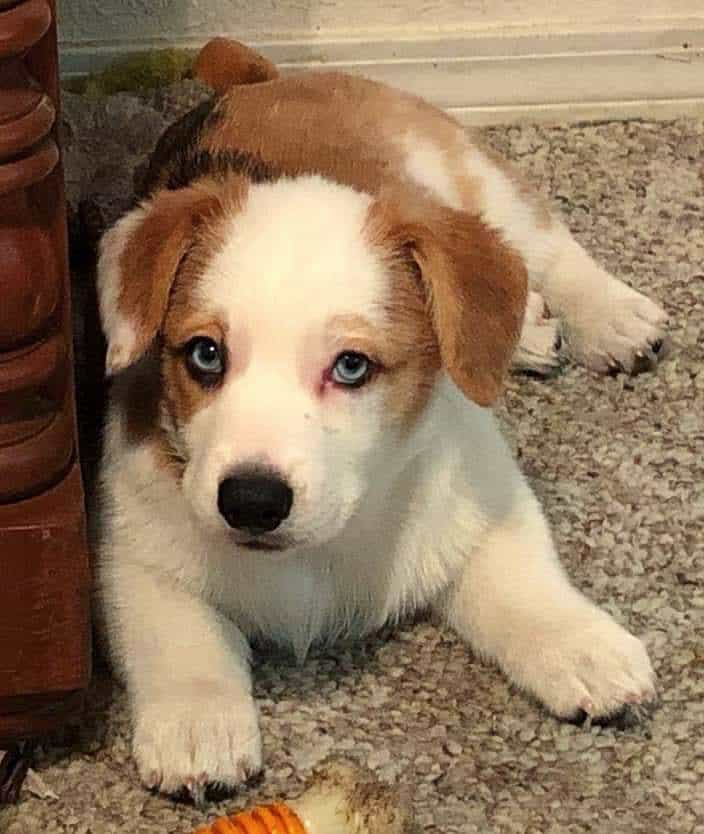
Photo from: @georgie_the_blue_eyed_corgi
Both Corgi breeds can have blue eyes, and all puppies are born with them. However, these will usually darken to a brown color as the dog gets older. Most will gain their true, permanent eye color by the time they are twelve weeks old.
Sometimes, a rare genetic mutation causes pups to keep the blue eye color, and in most cases, this does not make any difference to their health or physical appearance in any way. The only trouble you’ll have is if you plan on raising your Corgi as a show dog. The AKC breed standards state that Pembroke Corgis should have dark eyes that match their coat. Blue eyes are considered a ‘serious fault’ resulting in instant disqualification.
Cardigan Welsh Corgis can have blue eyes (or one blue eye and one brown eye) only if they have the merle gene.
If you don’t plan to show your dog, then this won’t be an issue!
The only time to be concerned is if a breeder mates two merle dogs as this can result in major health defects, including deafness and eye problems. If your pup carries the merle gene, you need to be cautious when selecting a mate if you plan to breed them.
Caring For Your Corgi’s Coat
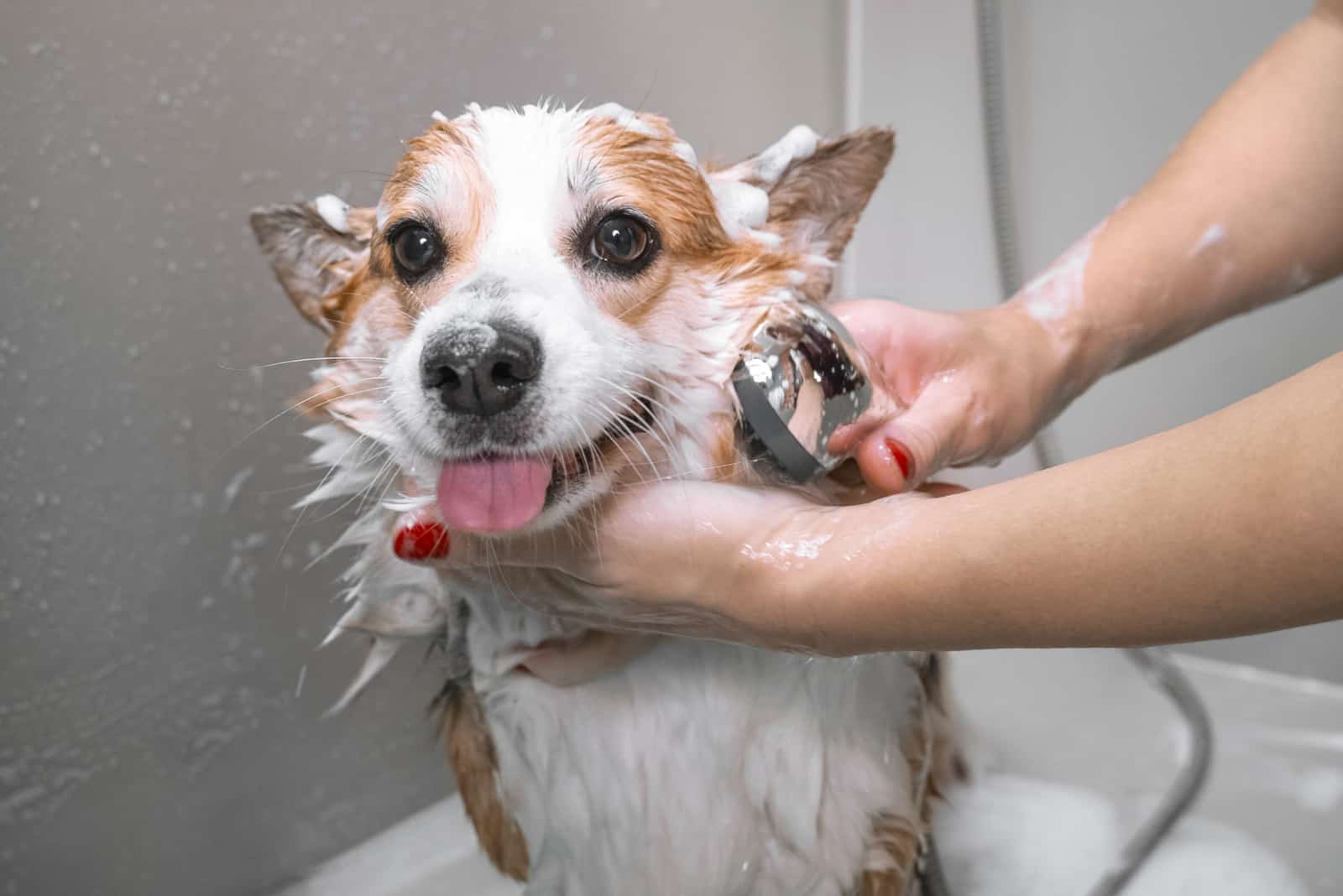
Both breeds have a double coat, with a thick, furry undercoat beneath the weatherproof guard hairs of the outer coat. It’s this dense undercoat that gets all over your home in spring and fall when the shedding season arrives and they ‘blow their coat’! And, they sure shed a lot of it.
This is triggered by changes in the amount of daylight rather than the air temperature, so your dog might shed at different times depending on your location. Generally, your dog will start to shed its thick winter coat as days begin to lengthen. Dogs that spend more time indoors are more likely to shed pretty evenly throughout the year.
You can keep all this loose fur under control by brushing your dog regularly and using the correct tools.
Brush them about three times a week, preferably with a slicker brush. You’ll probably need to increase this to every day during the shedding seasons, which will last between two and four weeks in spring and fall. Regular brushing also distributes natural oils throughout the dog’s coat and reduces the chance of matting. Tangled fur can be painful, and it also increases the risk of skin infections.
Bathing your pup every six to ten weeks or so will also help cut down loose hair, and it has the added bonus of making your dog smell nice! If possible, use a special deshedding shampoo as this helps with the process of brushing out the dead hairs.
While your dog is still damp (not soaking wet! Towel them down a bit first), you can gently brush out loosened fur. Alternatively, use a high-powered hairdryer (if your dog is okay with it!) to free the loose hair from the dog’s coat, taking care not to touch their skin or allow the dryer to become too hot.
Shedding is a natural process, but always watch out for any sudden or excessive hair loss as this could be a sign that something is wrong.
One of the best ways to keep your furry friend’s coat healthy is to provide it with a balanced diet. Good quality dog food doesn’t have to be expensive, and some dog lovers make their own at home.
As long as it is high in protein, low in carbs, contains essential fatty acids, and has a mix of vegetables, grains, meat, and fruit, it should be okay.
Omega 3 and 6 fatty acids strengthen the hair follicles and keep the skin elastic, keeping the skin and coat healthy, which reduces shedding.
Your dog’s coat is an excellent indicator of its overall health. If it is dull, with flaky skin or thin patches of hair, then the dog could be lacking nutrition or perhaps has an allergy.
If you notice that your dog’s fur is lackluster or losing more hair than usual, book them in with the vet for a checkup. With a few adjustments to their diet, or some medication, your pooch will soon have a healthy, shiny coat again.
Stress is another cause of hair loss in dogs, and this is frequently due to boredom. Many people don’t realize how energetic the Corgi dog is. They need at least an hour of exercise every day to use up that energy and to keep their minds stimulated. This combination of physical activity and mental stimulation is essential to their health.
Other than this, you should take your dog for regular health checks at the vet just to make sure that all is well. Use your grooming sessions to look for any lumps, infections, or signs of flea or tick bites.
Does Coat Color Matter?
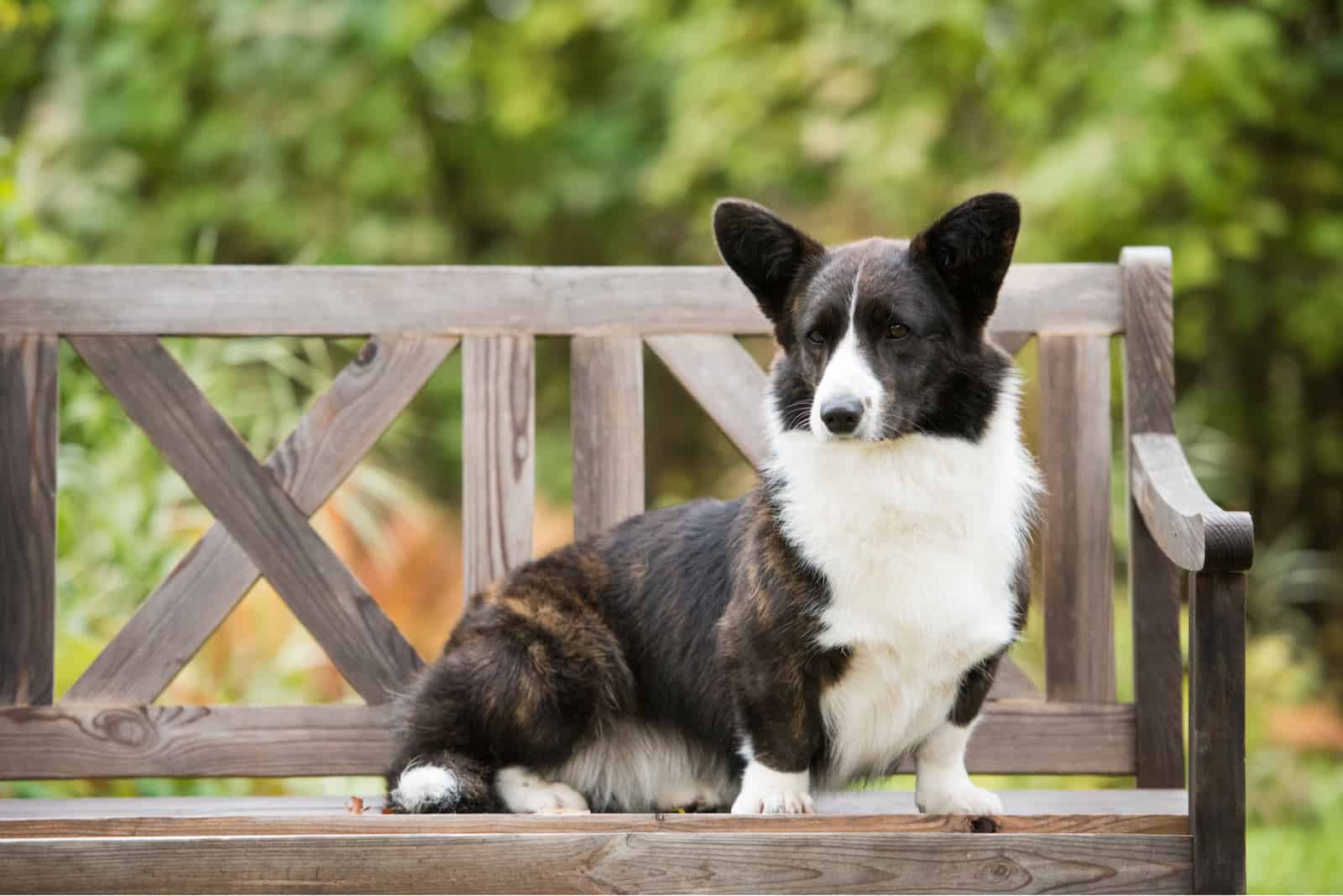
If you’re planning on entering your dog in the show ring, then it does matter! As we’ve learned, the rules and breed standards are strict, and your dog stands a fair chance of being disqualified if it’s the wrong color.
Furthermore, your dog might not make the grade if its fur is too long. Seriously! Some Corgis possess a gene that causes their hair to be extra long, and these are known as Fluffies. This is considered a ‘serious fault’, and your dog will be barred from the show ring.
Even so, this doesn’t seem to have deterred people. Because it is rare as well as being cute and fluffy, its popularity is rising, and people are actively seeking them out.
Some breeders are happy to sell them as pets, which is what it’s all about after all.
This point brings us back to whether color is important or not when choosing your dog. If your new Corgi pup is going to be a pampered, family pet, then color doesn’t matter one bit.
You might have a preference, having seen photos of the stunning white merles or red sables, and that’s entirely up to you. You have no need to fear reprisals from the AKC or the PWCCA as their restrictions, disqualification, and serious faults are irrelevant to you!
Your biggest concern is the breeder you choose. Avoid any who advertise rare Corgi colors. They are using it as a marketing ploy to ramp up the price. Find a reputable breeder by checking reviews and testimonials from happy Corgi owners. Approach the breeder and see what pups they have, or what litters are coming in the future. They’ll have a fair idea of what the pups will be like as they are experts in the field.
Don’t be too hung up on the color, though. Try to be flexible unless you are prepared to wait a year or two for the right dog.
Once you see your chosen pup, remember that her color will change! She might be registered as one color, but those shades and markings are going to alter drastically over the next few months.
If you do happen to get a merle Corgi, then your choice of breeder is even more important. And, if you plan to breed your dog when she is older, then it’s vital that you get some expert advice on the matter and avoid mating them with another merle dog.
Who knew that Corgi colors could be so complicated?
In the end, the most important factor is that your dog is as happy and healthy as possible regardless of its color and the length of its coat. And, this responsibility falls on you. It’s your job to give them the right amount of exercise and mental stimulation. It’s up to you to feed them a wholesome, balanced diet, and you must make sure that they are groomed regularly in order to keep that coat in excellent condition.
On top of this, you need to check their ears and eyes, and brush those teeth. Many dog owners aren’t aware that dental problems can cause severe health issues for dogs!
Owning a dog is a privilege, and it must be taken seriously.
It’s good to get a dog in a color you love, but every single one of them deserves the chance to thrive in a happy, loving home.
Read Next: Do Corgis Have Tails At Birth? 3 Reasons For Tail Docking
